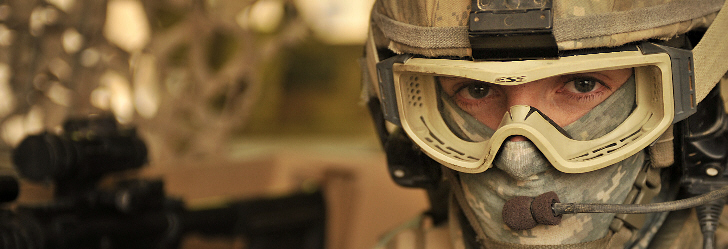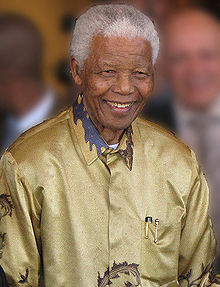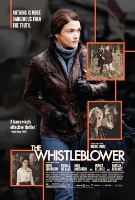Web 2.0 warfare from Gaza to Iran
The Iranian struggle is not however, the first conflict in which emerging ‘Web 2.0’ social media technologies have played a significant role. Israel's offensive in Gaza in December 2008 - January 2009 provides an important precedent which shows that, despite its undoubted potential for empowering new forms of bottom-up organisation, the social web is not immune from very traditional propaganda techniques.
Operation Cast Lead - The First Social Media War
The roots of Israel's media strategy in Gaza emerged in the aftermath of the 2006 Lebanon War. The Winograd Commission appointed by the Israeli Government to look into the conflict criticised a lack of co-ordination in the country's media effort. This led to the creation of the National Information Directorate in the Prime Minister's Office to co-ordinate efforts across government departments.[1][2]
The new directorate became operational some eight months before the Gaza conflict, and began planning for the offensive two months later, well before the events that ostensibly led to the breakdown of the ceasefire between Israel and Hamas.[1] As well as co-ordinating government ministries, the directorate also liaised with bloggers and community organisations. [3]
One key reservoir of new media expertise in Israel was the Interdisciplinary Center at Herzliya, a private college with some notable connections to Israeli intelligence. It hosts the Institute for Policy and Strategy formerly headed by Uzi Arad, an ex- Mossad intelligence director and currently an advisor to Benjamin Netanyahu. Arad was questioned by the FBI and barred from the US for several years because of his contacts in Washington and Herzliya with Larry Franklin, a US official jailed for leaking classified documents to the American-Israel Public Affairs Committee.[4]
IDC Herzliya's GLORIA Center is also the base for the Middle East Review of International Affairs, the journal from which the British Government plagiarised elements of the February 2003 'dodgy dossier' on Iraq.[5]
In June 2007, the IDC's Sammy Ofer School of Communications became the home for a new centre with an explicit remit to develop new media technologies for 'telling Israel's story to the world', The Asper Institute for New Media Diplomacy.
According to its founding statement , the Institute "provides workshops on creating effective new media advocacy campaigns and works with students in producing video, audio and written content about various aspects of life in Israel for use in new media channels such as the blogosphere, virtual worlds, social networks, computer games, pod casts and more."[6]
The Institute's project's include a media fellows programme , which trains 15 students in "promoting Israeli advocacy using new media tools" each of whom "will be expected to be on call ready to provide credible, first hand information on their experiences in Israel."[7]
Also notable is a year-long Israel advocacy course for international students called the Ambassador's Club. This programme is run by the Institute in conjunction with US-based Israel advocacy organisation StandWithUs, and the Israeli Foreign Ministry.[8][9]
The three-way relationship between IDC Herzliya, StandWithUs and the Foreign Ministry was central to Israel's new media operation following the launch of Operation Cast Lead in Gaza.
As the Israeli offensive got under way in December 2008, the Sammy Ofer School and StandWithUs came together to launch an online operation entitled Help Us Win.
Working with Stand With Us, the school’s dean, Dr. Noam Lemelshtrich-Latar and Major Reserve Jonathan Davis of the IDC, prepared the IDC students with relevant information that would help their cause. Asaf Talmor-Wertheimer, CEO and Co-Founder, Atarim Group Ltd. took time from work to join the Help Us Win cause as one of the group leaders.[10]
The project established two situation rooms, in Herzliya and Jerusalem, staffed around the clock by 15 to 20 volunteers whose role, according to the JTA news agency, was to "promote pro-Israel content on social networking Web sites, respond to online opinion polling and try to alter the tenor of discussions in Internet chat rooms."[11] In the US, the New York office of StandWithUs was also co-ordinating with these efforts.[12]
One of those hired by StandWithUs to lead the project was social media consultant Niv Calderon.[13] In an online résumé Calderon described his role during this period as "social media presence and crisis management for the Israeli For[e]ign Ministry during operation Cast Lead".[14]
Calderon issued an appeal for volunteers on his personal website on 29 December, and provided an update on progress on 1 January.[15][16]
So what have we been doing so far?
Fighting the "First Social War" made us realize we are fighting a multi-platform, multi-language, cross-cultural, cross-technology battle. Two days ago(Tuesday) I took part in building the Jerusalem Social Media Situation Room for the recent Israel Hamas conflict. Yesterday I've joined forces (along with other friends) with the second situation room in the Interdisciplinary Center in Herzliya which generously hosts us and let us use its facilities, personnel and connections.[16]
The post highlighted the following activities:
This is what we've got so far:
1- A blog: Help Us Win. The center of attention.
2- A multi language Status Report center that can show you (currently in English and French) what's going on all over the social web, divided to tabs for the different subjects and languages.
3- A Recruiting System - please register if you wanna help.
4- a Twitter account.
5- Two Facebook groups, in English and French.
6- A Press Releases Blog for government and IDF press releases. They should be more available anyway.[16]
According to Calderon, the tools used by HelpUsWin up to this point included: Gmail, Google Docs, Wordpress, Tumblr, Picasa Web, Netvibes, Twitter, Facebook, Youtube and Wufoo Forms.[16]
They also produced a social networking application called QassamCount, to track the number of Palestinian rocket attacks on Israel. This was initially created for Twitter by Dan Peguine, who went onto develop a version for Facebook with Arik Fraimovich.[17]
75,000 people had downloaded the application by February 2009, according to Calderon, who predicted that its influence would long outlast the conflict:
That's where the real power of QassamCount is. Most people haven't removed it and it reminds us of things we don't hear on the everyday news anymore, it travels the social web (and the social graphs), it shows you what we've been trying to say all this time, all these 9 years of crazyness that we've enduered, that no country will allow its citizens to be targeted. As the Qassams are the justification for operation Cast Lead , QassamCount is bookmarking tool and the constant reminder to the public around the world that there is more than one truth in this story.[18]
According to one member of the group, Ahuvah Berger, the HelpUsWin team also advised the Israeli government on its own extensive official social media effort.[19]
In the opening days of the conflict, the IDF Spokesperson's Unit established its own blog and YouTube channel featuring footage which purported to demonstrate the precision of Israeli targeting in Gaza.[20] The Israeli Consulate in New York also launched its own Twitter page. The first message announced an online press conference about the conflict with the Consul for Media and Public Affairs, David Saranga.[21]
As the conflict wore on, such tactics were widely seen to be successful. Historian Avi Shlaim suggested that the National Information Directorate had managed to establish three core messages in the international media, messages which he suggested amounted to 'a pack of lies'.[22]
It was not Hamas but the IDF that broke the ceasefire. It did so by a raid into Gaza on 4 November that killed six Hamas men. Israel's objective is not just the defence of its population but the eventual overthrow of the Hamas government in Gaza by turning the people against their rulers. And far from taking care to spare civilians, Israel is guilty of indiscriminate bombing and of a three-year-old blockade that has brought the inhabitants of Gaza, now 1.5 million, to the brink of a humanitarian catastrophe.[22]
Guardian contributor Rachel Shabi suggested that the PR offensive was enabling Israel to prolong the physical assault on Gaza.[23]
Indeed, that's a core discussion within the Israeli media: how long have we got before the world forces us to stop? Reports, especially in the first week, comprised interviews with Israeli correspondents in Europe and the US commenting on how well the media had swallowed the Israeli message.[23]
Following the unilateral ceasefires which ended the operation in mid-January, Herzliya became the venue for an evaluation of Israel’s social media effort.
The GLORIA Center at IDC gathered about thirty Israeli bloggers and members of Israel’s foreign and defense ministries for an informal gathering to evaluate the blogging effort during the Gaza war, new techniques and future challenges. Topics discussed included lessons of the Gaza battle for blogalogical warfare, live-blogging, new technologies and interactions with government. Bloggers delivered short presentations on their personal experiences and discussed future plans for cooperation.[24]
The lasting legacy of Israel’s approach to new media during the conflict was reflected in June when Consul David Saranga told the 140 Characters Conference in New York that Twitter had revolutionised Israeli diplomacy.[21]
Saranga said his goal is to use any platform necessary to present Israel's voice.
"I believe that if we want to win the cyber war - War 2.0 - the only way to win it is by coalitions, by bringing our people on board in order to participate in this conversation," he said.[25]
Even as Saranga was speaking a new conflict was unfolding, which would bring Twitter and its political potential to global attention as never before.
Twitter, Iran and the Green Revolution
In the aftermath of Iran’s disputed election on 12 June, thousands of Iranians took to the streets to protest against the return of incumbent President Mahmoud Ahmedinejad.[26] In the face of a government clampdown on the international media, the internet became a key source of news on the ‘Green revolution’, and nowhere more so than Twitter. Thousands of users turned their icons green in solidarity with the protestors, and passed on, or ‘re-tweeted’, reports from ‘twitterers’ inside Iran. In many cases, they removed the original sources and listed their own Twitter locations as Tehran, in the hope of confusing the Iranian authorities. They even (with the help of the US State Department) persuaded Twitter to postpone a scheduled maintenance to allow coverage of events in Iran to continue.[27]
Not everyone was enthusiastic about this development, however. US blog Charting Stocks claimed to detect an Israeli hand behind the explosion of Iranian coverage on Twitter.
I narrowed the spammers down to three of the most persistent - @StopAhmadi @IranRiggedElect@Change_For_Iran
I decided to do a google search for 2 of the 3 - @StopAhmadi and @IranRiggedElect. The first page to come up was JPost (Jerusalem Post) which is a right wing newspaper pro-Israeli newspaper.
JPost actually ran a story about 3 people “who joined the social network mere hours ago have already amassed thousands of followers.” Why would a news organization post a story about 3 people who JUST JOINED TWITTER hours earlier? Is that newsworthy? JPost was the first (and only to my knowledge) major news source that mentioned these 3 spammers.[28]
The Jerusalem Post defend its coverage as “part of an online documentation of Iranians' reaction to the election results on social media outlets” and argued that many stories spread on Twitter had subsequently been verified by journalists.
















































